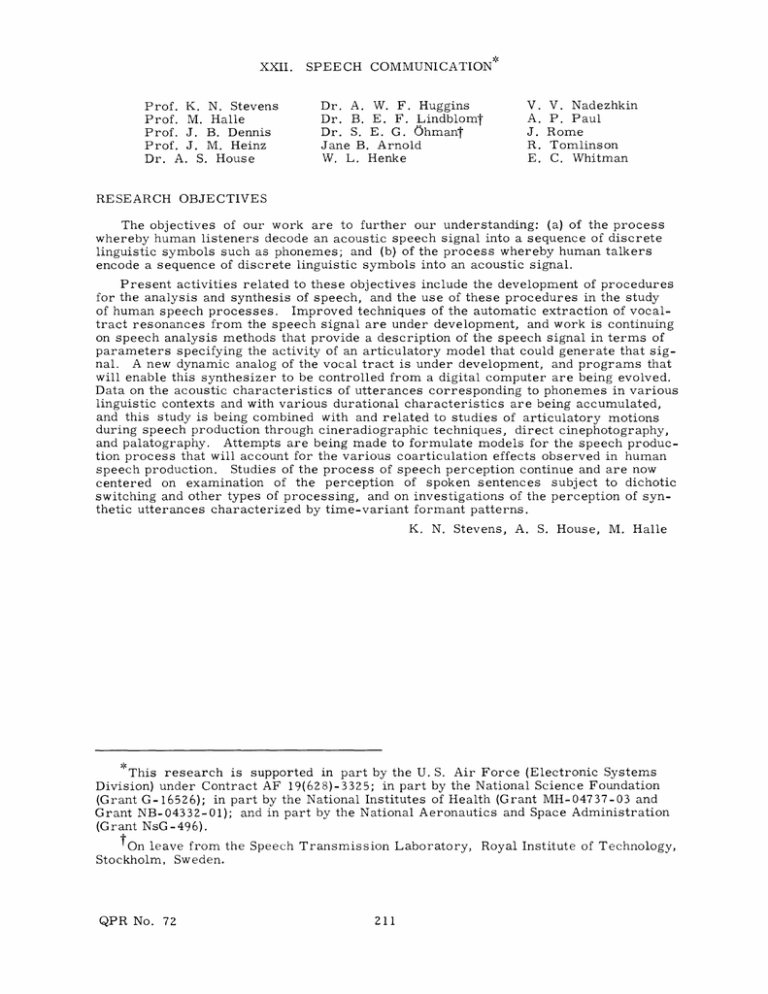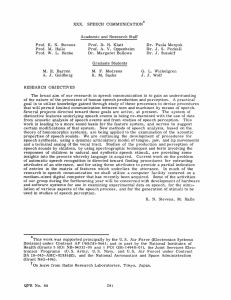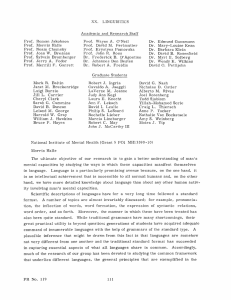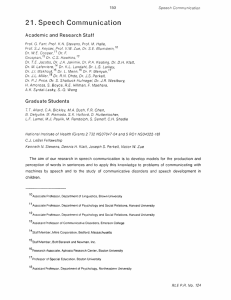XXII. * Dr. A. W. F. Huggins
advertisement

XXII. Prof. K. N. Stevens Prof. M. Halle Prof. J. B. Dennis Prof. J. M. Heinz Dr. A. S. House SPEECH COMMUNICATION * Dr. A. W. F. Huggins Dr. B. E. F. Lindblomt Dr. S. E. G. Ohmant Jane B. Arnold W. L. Henke V. A. J. R. E. V. Nadezhkin P. Paul Rome Tomlinson C. Whitman RESEARCH OBJECTIVES The objectives of our work are to further our understanding: (a) of the process whereby human listeners decode an acoustic speech signal into a sequence of discrete linguistic symbols such as phonemes; and (b) of the process whereby human talkers encode a sequence of discrete linguistic symbols into an acoustic signal. Present activities related to these objectives include the development of procedures for the analysis and synthesis of speech, and the use of these procedures in the study of human speech processes. Improved techniques of the automatic extraction of vocaltract resonances from the speech signal are under development, and work is continuing on speech analysis methods that provide a description of the speech signal in terms of parameters specifying the activity of an articulatory model that could generate that signal. A new dynamic analog of the vocal tract is under development, and programs that will enable this synthesizer to be controlled from a digital computer are being evolved. Data on the acoustic characteristics of utterances corresponding to phonemes in various linguistic contexts and with various durational characteristics are being accumulated, and this study is being combined with and related to studies of articulatory motions during speech production through cineradiographic techniques, direct cinephotography, and palatography. Attempts are being made to formulate models for the speech production process that will account for the various coarticulation effects observed in human speech production. Studies of the process of speech perception continue and are now centered on examination of the perception of spoken sentences subject to dichotic switching and other types of processing, and on investigations of the perception of synthetic utterances characterized by time-variant formant patterns. K. N. Stevens, A. S. House, M. Halle This research is supported in part by the U. S. Air Force (Electronic Systems Division) under Contract AF 19(628)-3325; in part by the National Science Foundation (Grant G-16526); in part by the National Institutes of Health (Grant MH-04737-03 and Grant NB-04332-01); and in part by the National Aeronautics and Space Administration (Grant NsG-496). On leave from the Speech Transmission Laboratory, Royal Institute of Technology, Stockholm, Sweden. QPR No. 72 211











